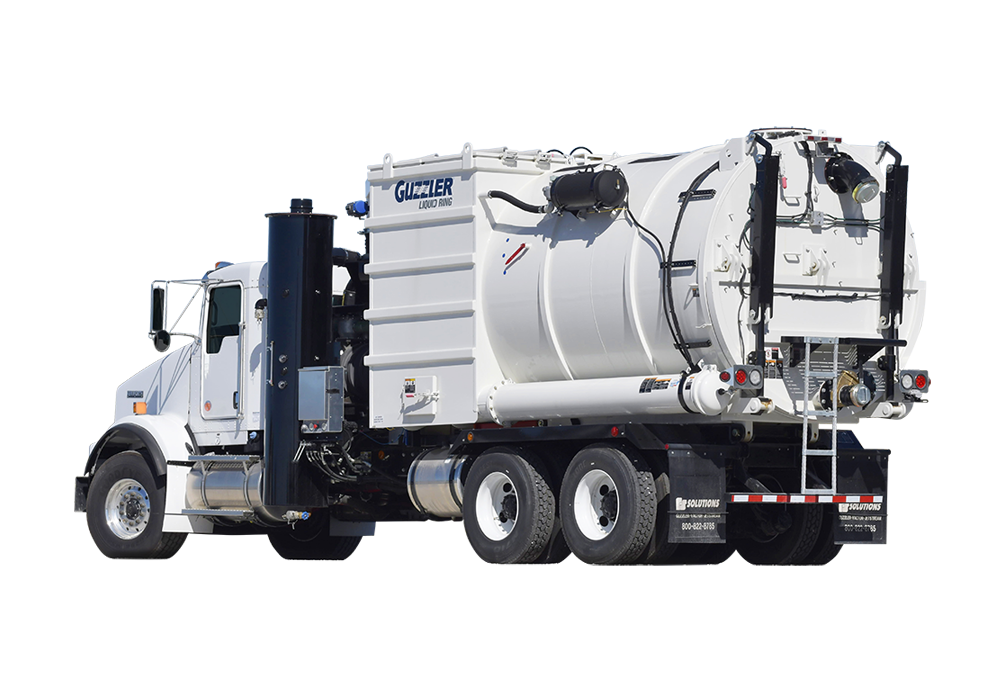Safety Tips For Operating Industrial Vacuum Trucks
by Guzzler Team, on Nov 26, 2024 8:00:00 AM
5 Tips for Completing Jobs Safely
When it comes to operating powerful industrial vacuum trucks, safety protocols are not guidelines but rather must-dos that protect both the operator and those around them. From preparation to on-the-job communication, there’s a lot to manage when it comes to safety. Industrial vacuum trucks can be used in a wide range of applications, with a variety of safety needs, which means operators need to be prepared. As a leader in industrial vacuum trucks, the Guzzler team considers safety to be the number one priority. With that in mind, we’re excited to share a few safety tips to help keep everyone safe on the job.

1. Train Properly
Ensuring operators are dressed in the correct Personal Protective Equipment (PPE) is vital for safety on the job. Essential items include safety glasses, gloves, and steel-toed boots, while high-visibility, reflective gear helps keep operators visible around the truck. It's also crucial to understand the specific materials being handled, as certain environments may require additional PPE, like respiratory protection, to safeguard against particular hazards. Wearing the right gear goes a long way in completing jobs safely and efficiently.
Just as you would inspect the truck before use, it's equally important to check your PPE for any damage. Damaged equipment should be replaced immediately to prevent safety risks. Additionally, operators must ensure that their PPE fits correctly and is worn properly. For specialized PPE, training might be necessary to use it effectively. Taking these extra steps helps ensure that every job is completed safely and without incident.
2. Inspect Thoroughly
Before starting up the truck, it’s crucial for operators to conduct a thorough inspection to spot any signs of damage or malfunction. If any issues are found, they should be reported right away to maintain a safe work environment. Making inspections a daily habit helps operators get familiar with what “normal” looks like, making it easier to spot anything unusual.
To ensure nothing is overlooked, it’s a great idea to use an inspection checklist. This can help keep the process consistent and thorough. In addition to a visual check, operators should also inspect fluid levels and test all lights and signals. Taking a few minutes to confirm that everything is in proper working order at the start of each day can make a big difference in preventing potential problems down the line.
3. Wear the Right Gear
Ensuring operators are dressed in the correct Personal Protective Equipment (PPE) is vital for safety on the job. Essential items include safety glasses, gloves, and steel-toed boots, while high-visibility, reflective gear helps keep operators visible around the truck. It's also crucial to understand the specific materials being handled, as certain environments may require additional PPE, like respiratory protection, to safeguard against particular hazards. Wearing the right gear goes a long way in completing jobs safely and efficiently.
Just as you would inspect the truck before use, it's equally important to check your PPE for any damage. Damaged equipment should be replaced immediately to prevent safety risks. Additionally, operators must ensure that their PPE fits correctly and is worn properly. For specialized PPE, training might be necessary to use it effectively. Taking these extra steps helps ensure that every job is completed safely and without incident.
4. Be Mindful of the Work Area
Always take time to assess the work area before starting any operation. When working in confined spaces, ensure there is proper ventilation to keep air quality safe. It's also essential to confirm that visibility is clear so that operators can easily spot any potential hazards. Avoid setting up on uneven surfaces to reduce the risk of tipping or instability. Remember, the health and well-being of your operators come first.
Strong communication on-site is another key to preventing accidents and injuries. Using tools like two-way radios, clear signage, and barriers can help everyone stay informed and aware. Identifying restricted areas and establishing safe routes ensures that operators, team members, and even nearby pedestrians remain safe throughout the job. Prioritizing clear communication keeps everyone on the same page and promotes a safer work environment.
5. Keep Up with Maintenance
Regular inspections and maintenance, following the manufacturer's guidelines, are essential to keeping your industrial vacuum truck in safe and reliable working condition. Routine checks should include inspecting hoses, filters, and other components to catch any wear and tear early. This proactive approach helps prevent unexpected breakdowns during operation, ensuring the truck is always ready to perform efficiently and safely. By staying on top of maintenance, you can extend the life of your equipment and reduce downtime, keeping your projects on track and your team safe.
Remember, safety is a team effort that starts long before the job begins and continues even after it’s done. Proper training, regular inspections, wearing the right PPE, staying aware of your surroundings, and maintaining the truck are all essential to ensuring safety when working with industrial vacuum trucks. By promoting awareness and prioritizing safety with Guzzler equipment, we can help create a safer work environment for everyone involved. Working together, we can ensure that every job is completed safely and successfully.
Proudly built in the United States from the Vactor Manufacturing facility in Streator, Illinois, Guzzler is supported by 19 company-owned service center locations across North America. Learn more about Guzzler equipment.












